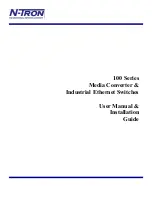
1
IRF overview
The HPE Intelligent Resilient Framework (IRF) technology creates a large IRF fabric from multiple
switches to provide data center class availability and scalability. IRF virtualization technology offers
processing power, interaction, unified management, and uninterrupted maintenance of multiple
switches.
This book describes IRF concepts and guides you through the IRF setup procedure.
Hardware compatibility
All HPE 5800 and 5820X switches support IRF.
An IRF fabric can contain both HPE 5800 and 5820X switches.
IRF benefits
IRF delivers the following benefits:
•
Simplified topology and easy management
—An IRF fabric appears as one node and is
accessible at a single IP address on the network. You can use this IP address to log in at any
member device to manage all the members of the IRF fabric. In addition, you do not need to run
the spanning tree feature among the IRF members.
•
1:N
redundancy
—In an IRF fabric, one member works as the master to manage and control
the entire IRF fabric, and all the other members process services while backing up the master.
When the master fails, all the other member devices elect a new master from among them to
take over without interrupting services.
•
IRF link aggregation
—You can assign several physical links between neighboring members to
their IRF ports to create a load-balanced aggregate IRF connection with redundancy.
•
Multiple-chassis link aggregation
—You can use the Ethernet link aggregation feature to
aggregate the physical links between the IRF fabric and its upstream or downstream devices
across the IRF members.
•
Network scalability and resiliency
—Processing capacity of an IRF fabric equals the total
processing capacities of all the members. You can increase ports, network bandwidth, and
processing capacity of an IRF fabric simply by adding member devices without changing the
network topology.
Application scenario
shows an IRF fabric that has two switches, which appear as a single node to the upper and
lower layer devices.






































